Cherries are little stone fruits with a wide range of colors and tastes. Both food and medication may be made from this fruit. Cherries are quite popular to be fed to guinea pigs.
The cherries are very good for your guinea pig, they contain enough antioxidants that can help boost and improve guinea pigs internal body activity. Cherry also has anti-inflammatory benefits, with an extremely high ORAC value. ORAC is a way of measuring the level of antioxidants in foods.
My pets adore cherries and will devour them if I feed it to them. However, I take care not to overfeed them. I offer them cherries in moderation since they are acidic and can harm their teeth.
Table of Content
Are Cherries Good for Guinea Pigs? | Health Benefits
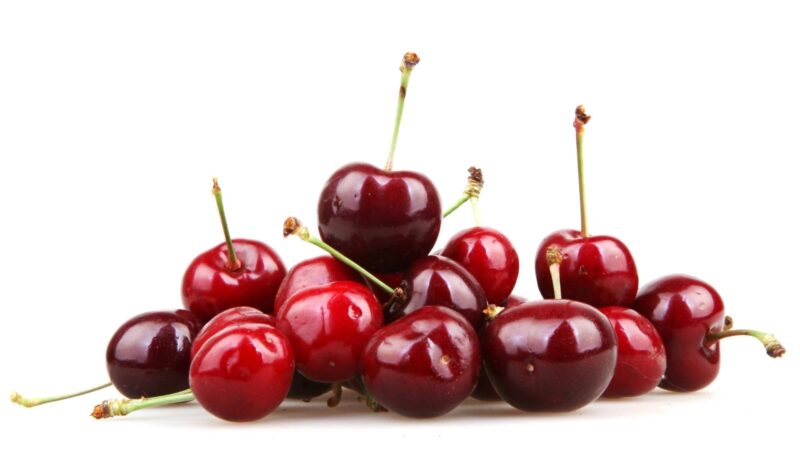
In recent times, in the United States, cherries have become very popular for consumption. This is due to the fact that a lot of research has been conducted on cherries. The research confirmed nutritional benefits that can be derived from this beautiful red fruit.
- Cherries contain enough antioxidants that can help boost and improve guinea pigs’ internal body activity. It also has anti-inflammatory benefits.
- It is a good source of vitamin C, which they find difficult to produce on their own. Vitamin C is essential in keeping the body free from diseases (e.g scurvy) and maintaining the health of your piglet.
- Cherry also has cardiovascular benefits. It helps regulate the cholesterol and glucose levels in them. It also keeps their metabolic system active.
- Cherry can help your guinea pig sleep well. It also lowers the risk of cancer, arthritis, and chronic heart diseases in your cavy.
- Cherries can also be a good source of fiber. Fiber helps in also maintain the length of the teeth. They are also necessary for the stimulation of digestion and maintenance of a balanced bacterial flora in the gut.
- It also contains 10% of potassium which helps to improve the functions of your guinea pig’s heart, kidney, and also bowel, and muscular system.
- Cherry can also have healing effects. Cherries can help heal wounds of guinea pigs, either external or internal and skin problems.
Nutrition Facts of Cherries
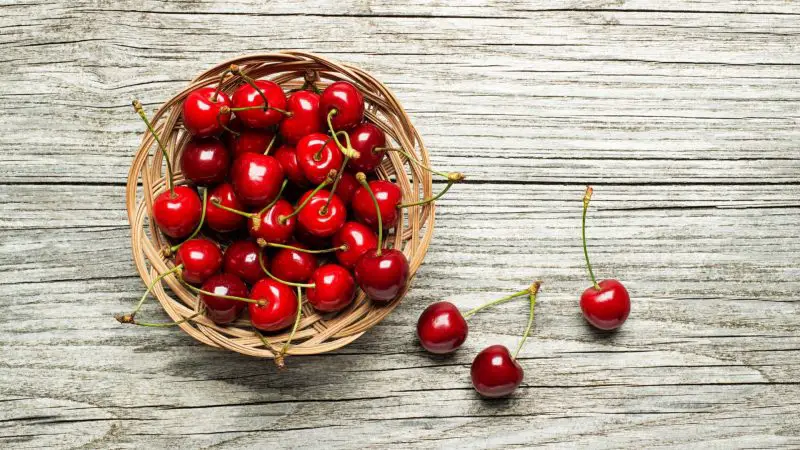
A red cherry, either the sour or sweet kind, contains the following nutrients per 100 grams:
- Carbohydrate – 63
- Sugar – 12.8 g
- Dietary fiber – 2.1 g
- Fat – 0.2 g
- Protein – 1.1 g
It also contains the following essential vitamins:
- Thiamine (B1) – 2 %
- Riboflavin (B2) – 2 %
- Niacin (B3) – 1 %
- Pantothenic acid (B5) – 2 %
- Vitamin B6 – 2 %
- Folate (B9) – 1 %
- Choline – 6.1mg
- Vitamin C – 12%
- Vitamin K – 3%
The following minerals are also present in modest quantities:
- Calcium – 13 mg
- Iron – 0.4 mg
- Magnesium – 11 mg
- Manganese – 0.1 mg
- Phosphorus – 21 mg
- Potassium – 222 mg
- Zinc – 0.1 mg
Can Cherries Be Bad for Guinea Pigs? | Possible Risks
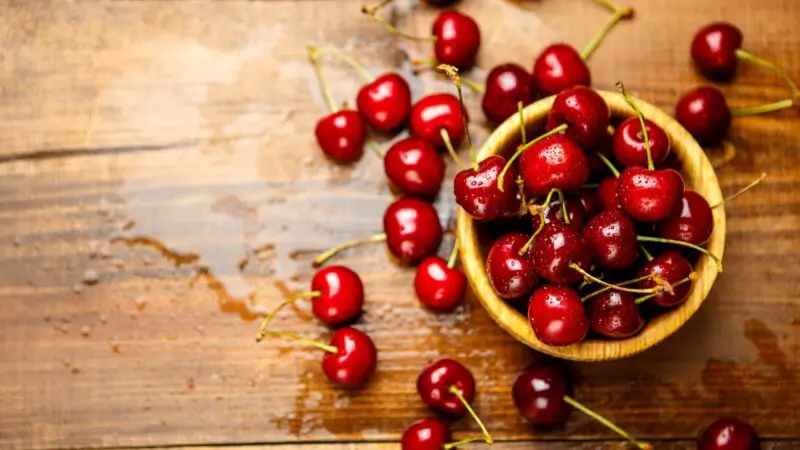
When you give them too many cherries, the acidic contents in the cherry can burn their mouth. It makes it difficult for them to eat afterward, even if they are hungry.
Cherry stems, pits, and leaves should be avoided. They all contain cyanide that is very toxic and poisonous.
Cherries contain fiber (approximately 2.5 per cup), which if consumed heavily can certainly lead to constipation.
If you are feeding your guinea pig for the first time with cherries you need to observe for side effects. When you notice any unusual behavior, it is advisable to stop feeding them with cherries.
Serving and Frequency of Cherries for Guinea Pigs
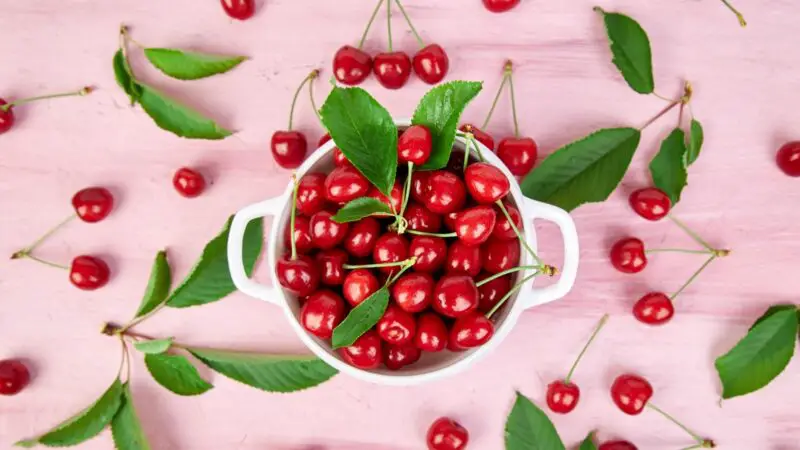
Guinea pigs absolutely love cherries and luckily they are also extremely high in nutrients. However, cherries can also have negative effects on your guinea pig if you feed them with cherries regularly and in large quantities.
Cherries should be given to them not more than three times a week and in different rations. One cherry per day is enough for an adult guinea pig. Half of the cherry is enough for a baby piggy.
More Information About Cherries and Guinea Pigs
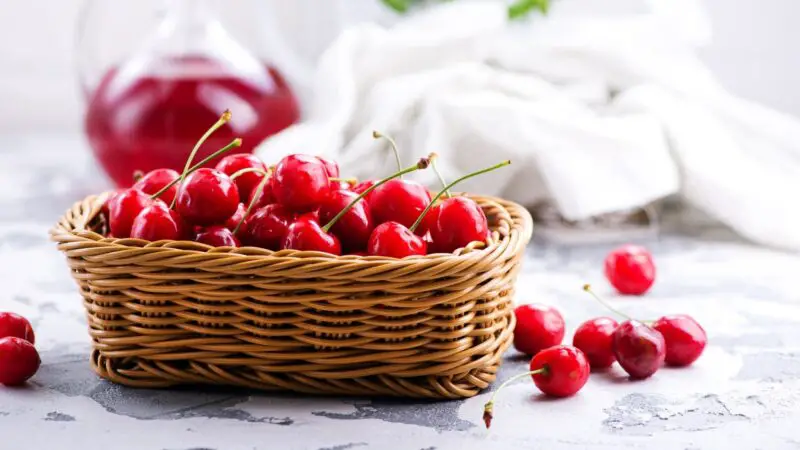
Can Guinea Pigs Eat Canned Cherries?
Canned cherries shouldn’t be eaten by guinea pigs. All canned food contains high levels of chemicals that may be dangerous to your dogs, including preservatives, sugars, and artificial flavors. Thus, fresh, seedless, organic cherries are the only things you should ever give your guinea pigs.
Can Guinea Pigs Eat Cherry Tree Leaves?
Guinea pigs cannot eat cherry tree leaves. Cherry tree leaves have a thin-toothed tip that can be harmful to the throat and general health of your pet since they are highly serrated. Prussic acid, or hydrogen cyanide, which is devastating to their health if swallowed, is also present in tiny amounts.
Can Guinea Pigs Eat Dried Cherries?
Guinea pigs should not eat dried cherries. More than five times as much sugar is present in dried cherries as compared to fresh ones. Food is more likely to be unhealthy the more sugar it contains.
Quick Facts on Cherries
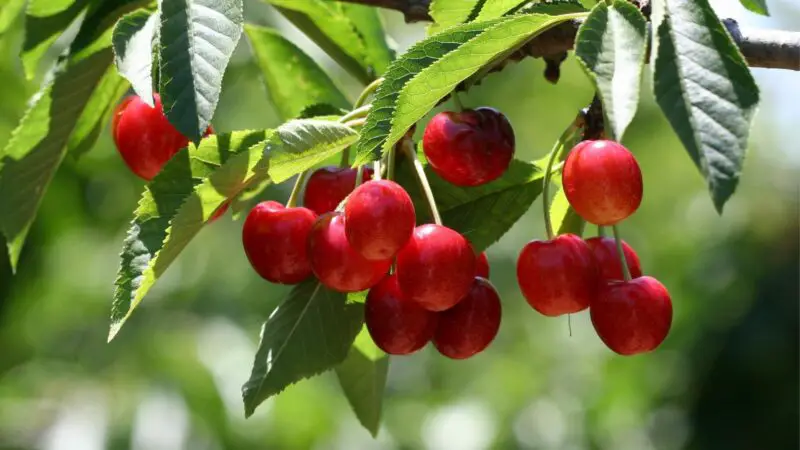
- Cherry is a stone fruit (drupe) with two varieties; namely the sweet cherry (which is also called, wild cherry) and the sour cherry.
- An unbelievable fact is that they also belong to the family of roses.
- There is also another variant of cherry that is specifically grown in Africa. It is referred to as the African Cherry and they are usually common during the rainy season in Africa.
- Cherries are said to have been with us since 300BC because they are mentioned in the book “History of Plants,” which was written by Theophrastus, a popular Greek author.
- Cherry, the word, is said to have originated from the Latin word “cerasum,” which refers to a place in ancient Greece called “Kerasous,” which is now Giresun in Turkey. It is believed that from this place, cherries were first transferred to Europe.
- The word “cherry” is also used to describe the cherry tree that is usually used by carpenters to make furniture; tables, cutting boards, chairs, office desks, and so on. It is especially valued for its rich golden-brown color.
- Turkey is the highest producer of sweet cherries, with a production of 445,556 tonnes annually. On the other hand, Russia is the highest producer of Sour cherries, with a production of about 198,000 tonnes annually.
- Washington grows the highest percentage (about 62%) of the sweet cherries produced by the U.S.
We have also made a full list of foods that guinea pigs can and can’t eat (150+ Types of Foods). Be sure to also check our recommended products page for everything you will ever need to assure a happy life for your guinea pigs. Hope this information was helpful and you have found the answer you were looking for.
List of Sources
Cherries, Nature’s Hidden Treasure
A Care Guide for Your Guinea Pig (Cavia Porcellus)
How to Care For Your Pet Guinea Pig
The Effects of Diet on Anatomy, Physiology and Health in the Guinea Pig
